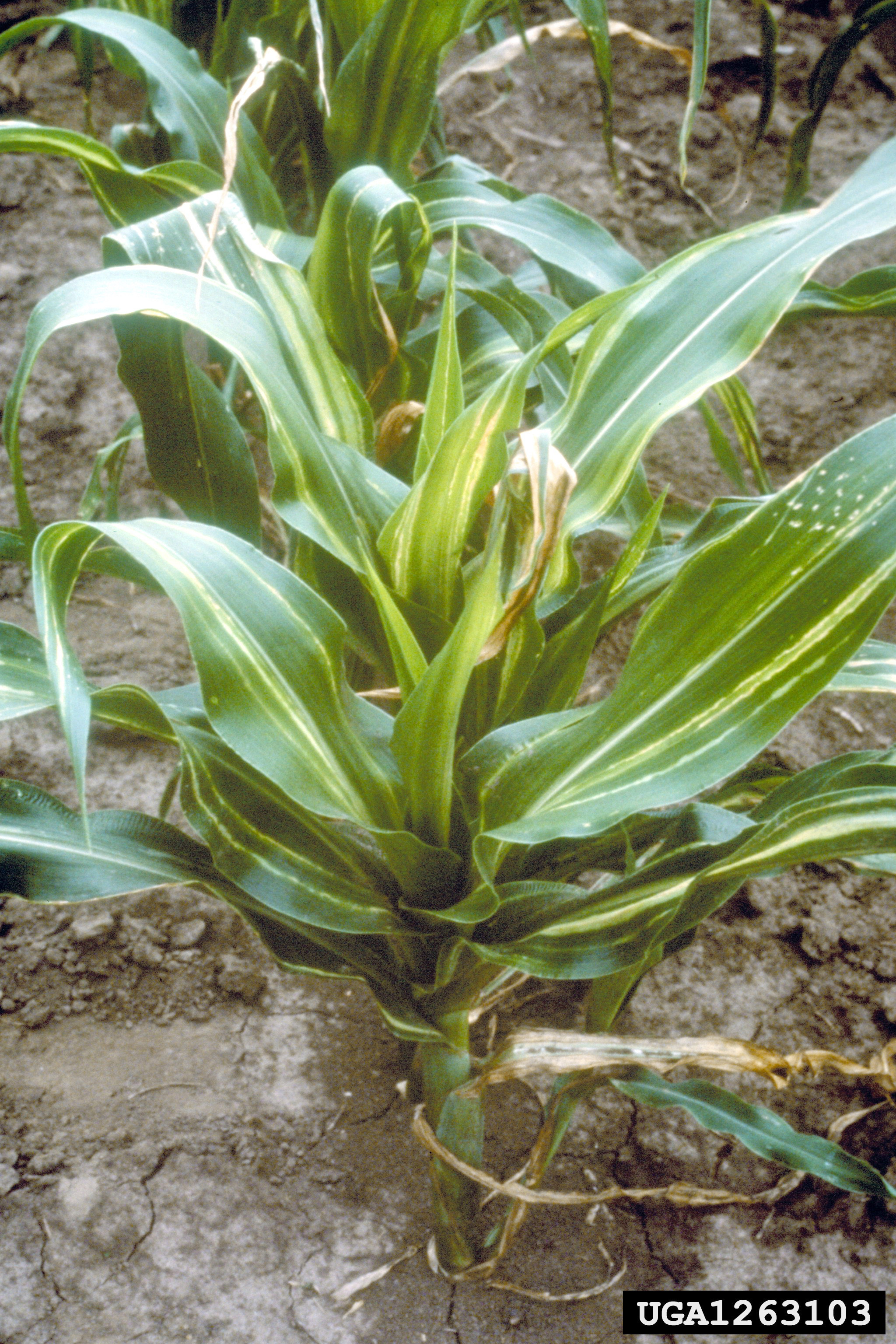Stewart's Wilt
Return to diseases
Stewart's wilt (Pantoea [Erwinia] stewartii) shows its first symptom in seedlings as streaking (pale green to yellow in color) that appears between and parallel to leaf veins and later turns necrotic; streaks can run the entire length of affected leaves (Fig. 34a). Seedlings can be infected systemically and also will show stunting (Fig. 34b); necrosis may be present in the stalk near the soil line. In older plants, leaf streaking (followed by necrosis) is the main symptom observed. The causal agent is transmitted to sweet corn by overwintered adult corn flea beetles, and this transmission can occur in a short period after seedlings emerge. Survival of flea beetles is greatly diminished if average winter (December through February) temperatures are 27 °F and the risk from Stewart’s wilt is minimal; however, if average winter temperatures exceed 30 °F, disease risk will be moderate to high.
Foliar symptoms of Stewart's wilt of corn
(Photo: UK Vegetable IPM Team, University of Kentucky)

Foliar symptoms of Stewart's wilt of corn
(Photo: J.K Pataky, University of Illinois at Urbana-Champaign, Bugwood.org)
Management:
- Resistant varieties (most important consideration) and insecticides (seed treatments or in-furrow applications) to kill flea beetles before they transmit the Stewart’s wilt pathogen.
Return to diseases
